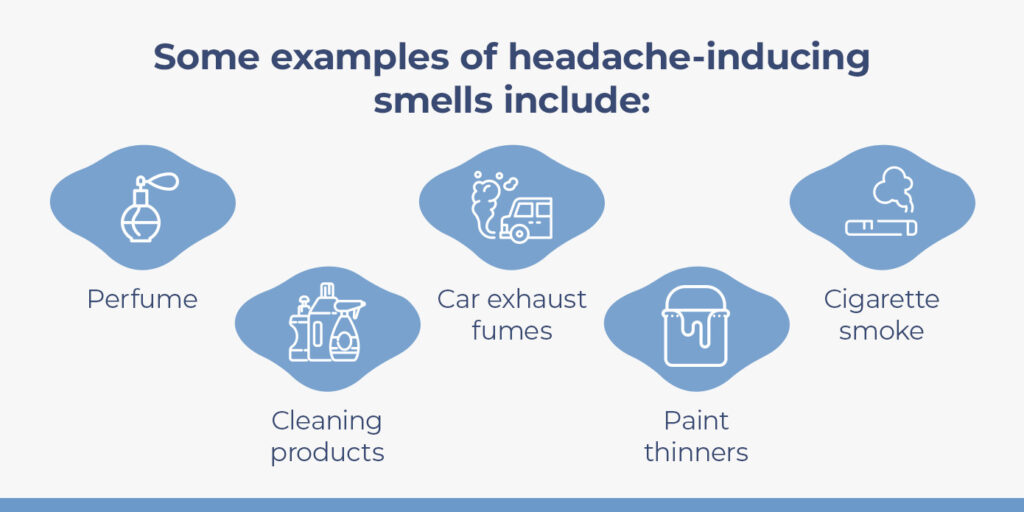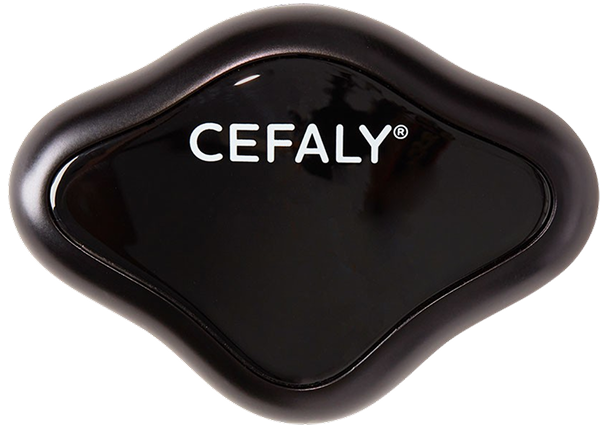Migraine is also a widely misunderstood disease. Most people view attacks as just a “bad headache,” but the symptoms can be debilitating and last hours or even days. Everyone’s attacks are different. Most people experience head pain, nausea, dizziness and fatigue. These symptoms make it hard to work productively and be around others.
If you’ve had multiple migraine attacks on the job and want to know what caused them, you’ve come to the right place. This guide covers the most common reasons for migraine and headaches at work. We’ll also give you some tips to overcome them so you can get back to life.
1. Bright lights
One of the most common triggers for migraine at work is bright, unnatural lighting. A typical office environment is very well-lit with overhead fluorescent lights. Many people also have lamps and screens on their desks. The flickering fluorescent bulbs, bright screens and glare can all cause a migraine attack.
If you find that lights trigger your migraine, you may have a condition called photophobia. The word photophobia directly translates to “fear of lights.” However, people with photophobia are sensitive to light rather than afraid of them. If you have migraine with aura — a set of sensory disturbances — you may be more sensitive to lights leading up to an attack.
2. Loud noises
Loud noises can trigger attacks and exacerbate migraine pain. Shouting or loud conversations in an office can make migraine worse. If you work near a road in a city, the sirens and traffic noises can be issues, too. This sensitivity to sound is called phonophobia. Many people with migraine have this condition along with photophobia.
3. Strong smells
Most people with migraine have osmophobia, a sensitivity to smell. Offices, shops, factories, farms and hospitals are full of strong odors that can trigger migraine. Some examples of headache-inducing smells include:

- Perfume
- Cleaning products
- Car exhaust fumes
- Paint thinners
- Cigarette smoke
4. Work stress
Many people with migraine suffer from stress-induced attacks. Work is one of the biggest causes of stress in most people’s lives.
Things like negative workplace culture, poor management and heavy workloads are challenging. You may feel even more stressed if you also have hardships in your personal life.
Over an extended period, stress can affect your mental and physical health. Common signs include migraine attacks, fatigue, irritability and even depression.
Learning effective coping strategies is key to managing stress and combatting migraine attacks.
Get Drug-Free Migraine Relief With CEFALY
Shop Now
90-day money back guarantee
FDA-cleared
financing available
5. Dehydration
It’s easy to forget to drink at work, especially when you’re busy. Many people drink coffee at work instead of water to keep themselves alert and focused. However, dehydration can cause migraine attacks and make your migraine pain worse.
Sticking with proper hydration practices is key to feeling your best at work. Even those without migraine can get headaches at work when they don’t drink enough water.
6. Sleep issues
Work often affects sleep schedules and sleep quality. A stressful workday can make it harder to fall asleep. People who work nontraditional hours or in shifts may have inconsistent sleep schedules. They may develop sleep disorders like insomnia, shift work sleep disorder and restless leg syndrome.
Too much, too little, poor quality and irregular sleep can cause migraine attacks and worsen symptoms.
7. Lack of movement
People who work in offices often sit at a desk in front of a computer for most of the day. If you have poor posture out of habit or because of a bad desk setup, you may have more migraine attacks.
Poor posture, slouching or tilting your head can cause muscle tension in the neck and shoulders. This tension can cause headaches during work and worsen migraine.
Try CEFALY to Prevent & Relieve Migraine Pain
Quick tips for overcoming migraine during work
Having a migraine attack at work can be stressful and painful. Luckily, there are things you can do to decrease the chances of them happening.
If you’re dealing with migraine attacks during work, try the following tips to see if they work for you:
- Have screen breaks: Take small breaks away from your computer or mobile device every hour or two. You can also try the 20-20-20 rule — look at something 20 feet away for 20 seconds every 20 minutes. Screen and antiglare filters may help, too.
- Wear headphones: If sound is a leading trigger for you, wear noise-canceling headphones or earplugs to block it out.
- Find a quiet room: When you feel an attack starting, find a quiet, dark room to rest and recover. Breathing techniques can help when stress is the trigger. Chat with your manager about organizing a backup if you can’t easily step away.
- Drink water: At work, drink at least 2 liters of water every day. Avoid drinking caffeine and alcohol as well to see if that helps.
- Change your setup: If your posture or desk setup triggers migraine attacks, make some adjustments. Set your screen to eye level to avoid straining your neck, and invest in an ergonomic chair. You can also use a standing desk and compact treadmill to increase movement while working.
- Try neurostimulation: Migraine devices like CEFALY are a drug-free treatment for migraine pain. It uses neurostimulation to relieve pain and decrease attack frequency.
- Ask for accommodations: You don’t have to suffer in silence. Asking your employer for accommodations to manage migraine is a reasonable request. They may be able to make the lighting softer and warmer or improve office acoustics. They may introduce antifragrance policies or allow you to work from home. Talk with your employer or the human resources department about your triggers and see what changes they can make.
Under protection from the Americans with Disabilities Act (ADA), employers cannot fire or turn you away because of migraine. They must provide reasonable accommodations to prevent migraine attacks. In severe cases, migraine qualifies as a disability.
Use CEFALY to manage migraine at work
Take charge of your treatment with a CEFALY migraine device. Our FDA-cleared devices are compact and rest on your forehead to stimulate the trigeminal nerve. This nerve is the main pathway for migraine pain, and neurostimulation can desensitize it over time.
You can use the ACUTE treatment mode at work to help during an attack. According to one study, 79% of CEFALY ACUTE treatment users experienced a significant reduction in headache pain after one hour of use. The device also has a PREVENT mode you can use at home to have fewer attacks at work.
Invest in a CEFALY device today to improve your quality of life. We offer free shipping on all device orders and a 90-day money-back guarantee, so you can try it risk-free.















